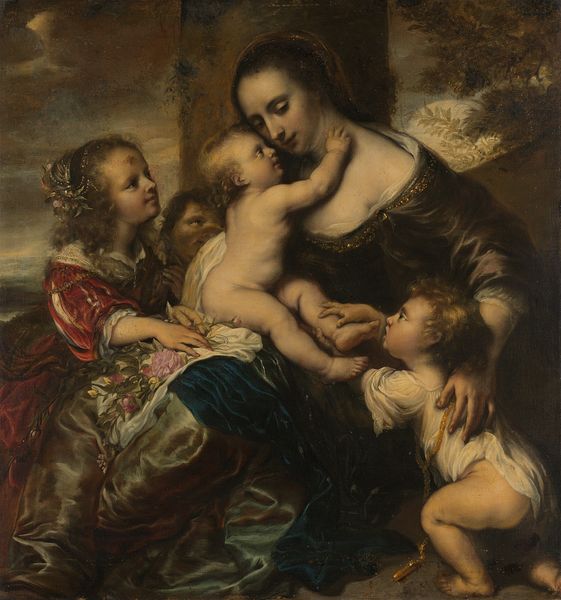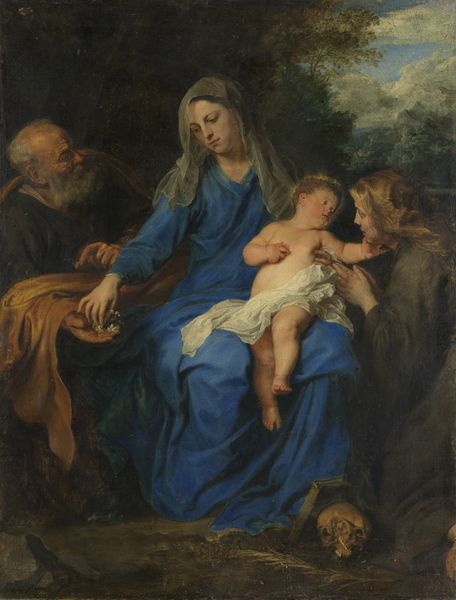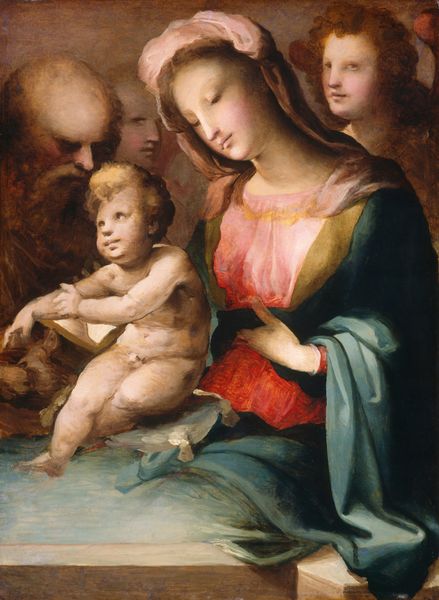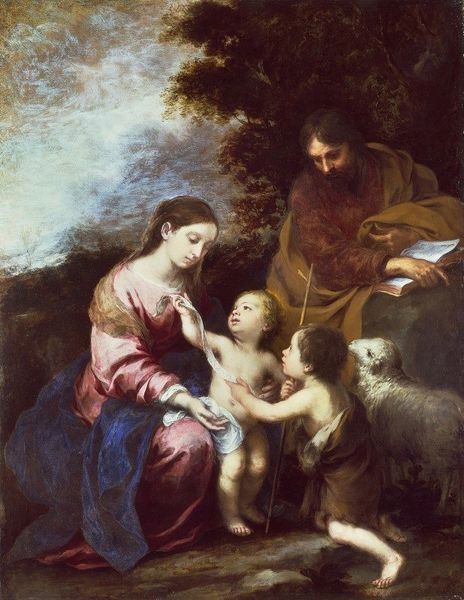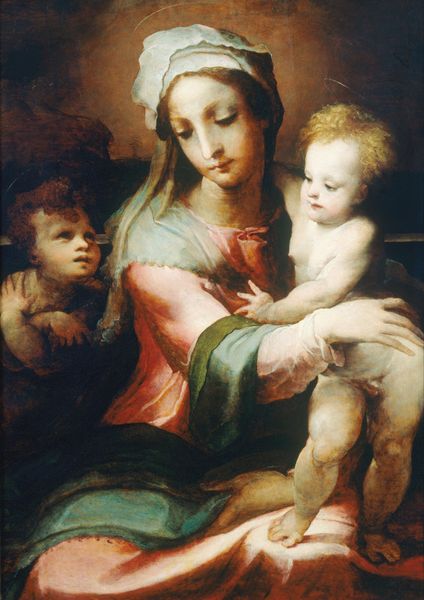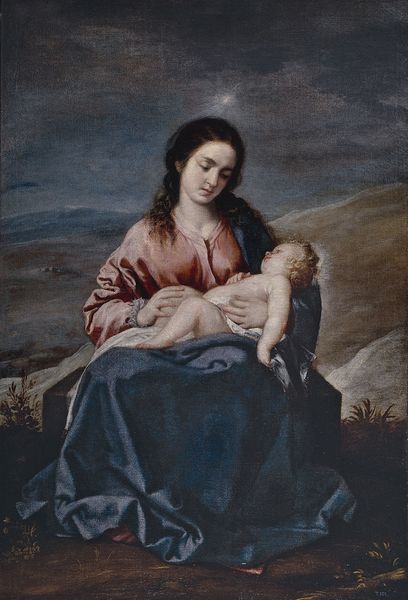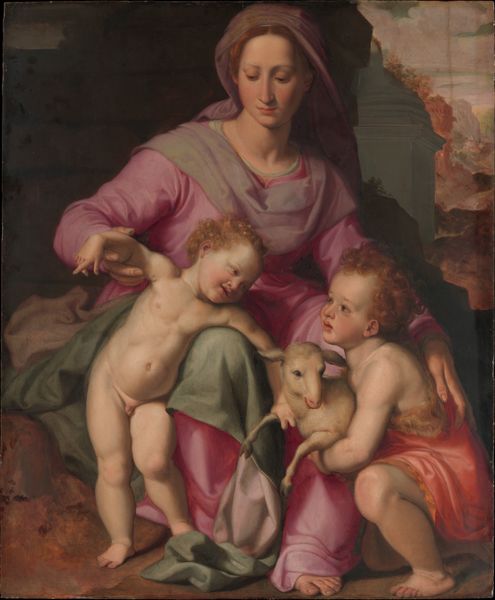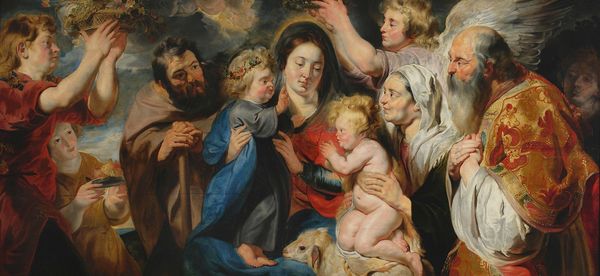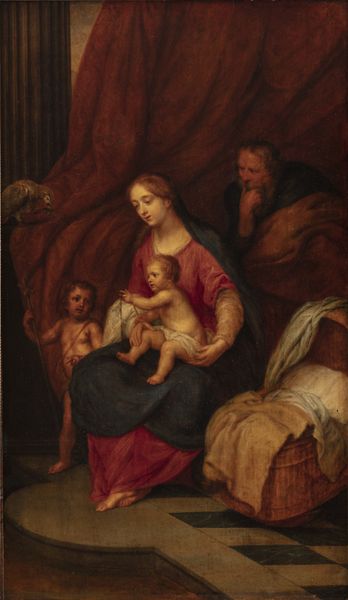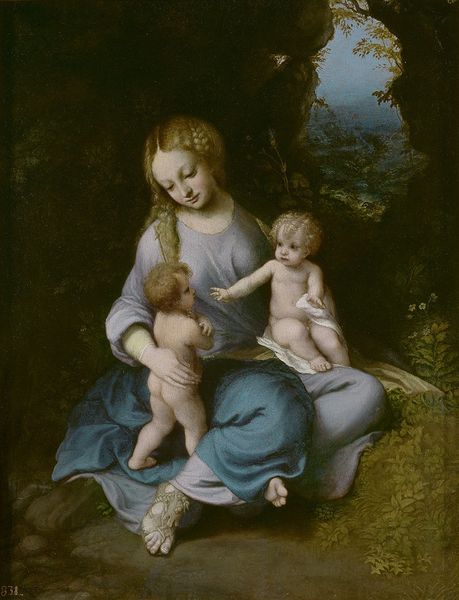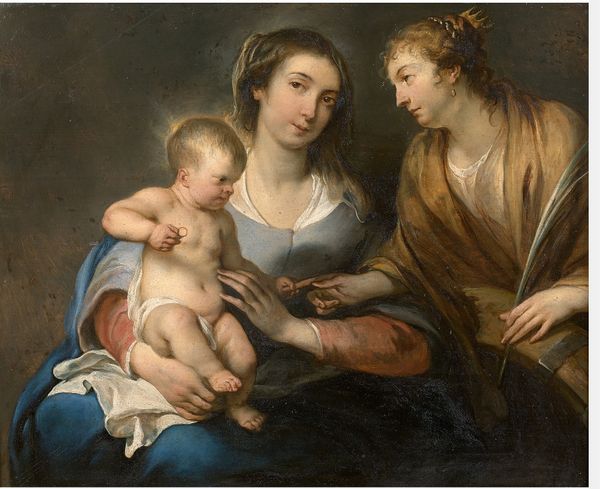
painting, oil-paint
#
portrait
#
allegory
#
baroque
#
painting
#
oil-paint
#
classical-realism
#
figuration
#
11_renaissance
#
mythology
#
animal drawing portrait
#
history-painting
#
italian-renaissance
#
portrait art
Copyright: Public domain
Curator: Standing before us is "The Madonna of the Rosary" by Bartolomé Estebán Murillo, created around 1680. An oil painting depicting the Virgin Mary holding the Christ child, surrounded by cherubic figures. Editor: My immediate response is to the intense sweetness, almost cloying, of this work. The figures appear idealized, floating amidst this nebulous, golden backdrop. Curator: Murillo was a master of the Baroque style, deeply invested in portraying religious narratives. The rosary itself, held by both Mary and the child, signifies a potent symbol of faith, redemption, and the divine feminine. Editor: And we cannot forget the power structures that informed the construction of this imagery. The Catholic Church used such depictions to reinforce its authority and message, particularly within colonial contexts where conversion was a violent, political tool. The virgin idealized as mother, as caregiver and passive model. Curator: Absolutely, the historical backdrop matters significantly. Murillo’s painting can be interpreted as a carefully constructed visual catechism, aiming to elicit piety and devotion. Notice the tenderness in Mary’s gaze, the plump cherubs acting almost as a chorus... Editor: It also fits into a historical moment marked by heightened interest in spirituality, during the Spanish Golden Age, and with religious works employed to negotiate social and political power dynamics. These innocent looking figures operate within a larger discourse of faith and empire, a narrative of power enacted through art. Curator: I think we have to remember the time period's influence and intention, the way imagery speaks to our emotional landscape as part of its power. Even now, seeing this, a specific emotion is created. The way that Mary is depicted with such an emphasis on light is important too. The Baroque frequently did that in their paintings as they knew the importance and impact it would create. Editor: Right, these paintings were effective because they had immediate emotional effect. Still, it can be interesting to question whose emotions and responses mattered then. Murillo was clearly effective at communicating ideals and social goals with beauty, which are really one and the same to those that held power. Curator: Food for thought! Thanks for opening my mind to look at this in a different light. Editor: It’s critical for cultural dialogue! These paintings, like all artworks, continue to reveal, resist, and complicate established ideology.
Comments
No comments
Be the first to comment and join the conversation on the ultimate creative platform.
